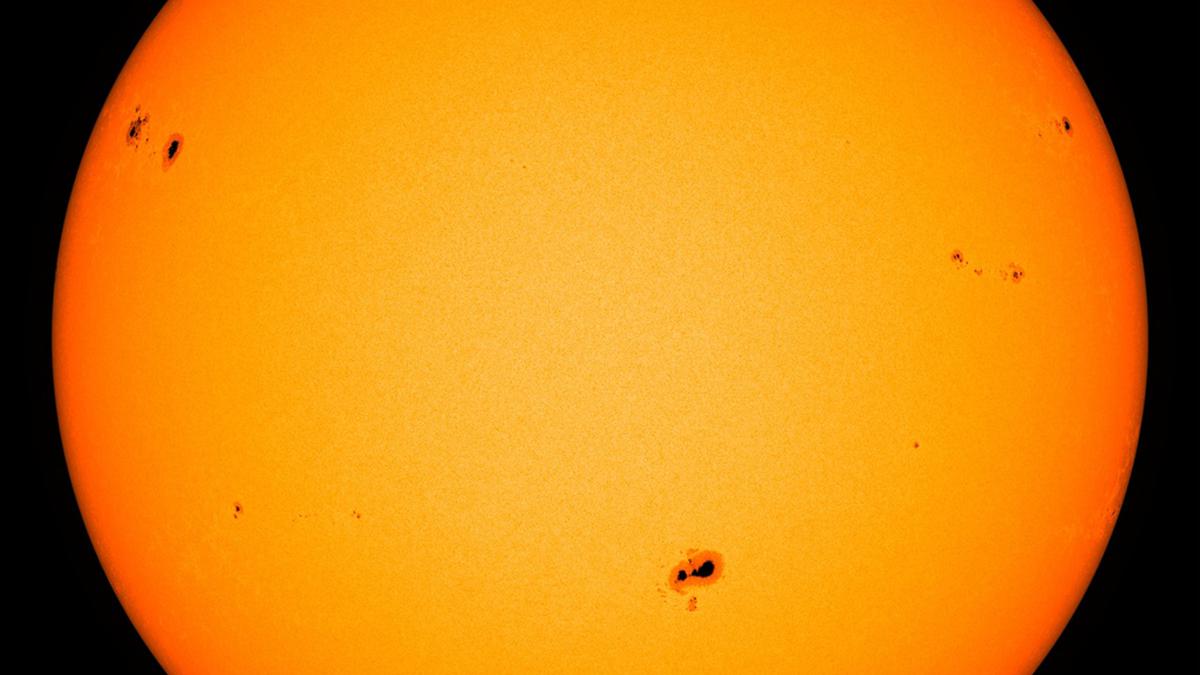
Sunspot as big as Earth visible without use of telescope
The Hindu
A Sunspot, identified as Sunspot 3363, has been spotted on the surface of the Sun. It is currently visible without the help of telescopes.
A Sunspot, identified as Sunspot 3363, has been spotted on the surface of the Sun. It is currently visible without the help of telescopes, according to Souda Atul Bhat, co-ordinator, Poornaprajna Amateur Astronomers’ Club, Udupi.
A Sunspot is a region on the surface of the Sun where the temperature is less than its surroundings. “The surface of the Sun is as hot as 5,000 degrees, while these regions are at 4,500 degrees. This reduction in 500 K between the region and its surroundings, which means the surroundings of the Sunspot give out more light than the Sunspot and thus, it appears dark,” he said in a release issued on Thursday.
“The Sunspot 3363 has been visible since July 6, 2023, and might be visible until the end of this week, before it moves away from our view and not appear again,” said Mr. Bhat, who is assistant professor of physics at Poornaprajna College in Udupi.
“Care must be taken to use proper filters to observe the Sun. Do not stare directly at it, do not use X-ray sheets or goggles meant for day-to-day activities. The Sun must always be observed with a certified solar filter. Using anything other than a filter can damage the vision,” Mr. Bhat said.
Sunspot 3363 has been growing in size. This increase in size has led to the Sunspot being visible to the naked eye, with the help of a solar filter, without any telescopes, or binoculars. Normally, Sunspots are only visible through a telescope equipped with a solar filter. “The appearance of the Sunspot 3363 of such large size suggests that the Sunspot is currently larger than the Earth itself. Typically, Sunspots can vary between 16 km to 1,60,000 km in size. The Earth’s diameter is 12,742 km and therefore, it is normal for a Sunspot to be larger than the Earth,” the release said.
However, the size and appearance of the Sunspots are not uniform. The appearance of Sunspots depends on what is known as the solar cycle. This is a period of 11 years where the activity on the surface of the Sun, seems to increase and then decrease, before repeating again. The current solar cycle, i.e. Cycle 25, began in 2019 and is expected to show maximum activity in 2025. “So we will observe more such sunspots in future as well. However, there is no guarantee that it will always appear on the part of the Sun that’s facing the Earth. Scientists are still trying to figure out why the solar cycle lasts 11 years and other mysteries associated with it. The only thing that we know is that the Sunspot is a consequence of the complex magnetic fields of the Sun and Sunspot 3363 will not erupt and cause any harm to Earth,” he said.
A Sunspot can be visible from anywhere between a few hours to a few days on the surface of the Sun. A stable and large sunspot can be seen for several days as it moves across the Solar Disk as the Sun rotates while some sunspots can disappear within a few hours. “It is important that we observe such a wonderous act of nature, where we notice a dot on the Sun’s surface that is bigger than the Earth, giving us a clearer picture as to how big the Sun really is,” Mr. Bhat said.













